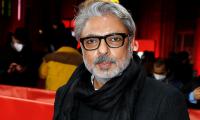ISLAMABAD: The pre-feasibility study of the Ravi Riverfront Urban Development Project (RRUDP), inaugurated by Prime Minister Imran Khan on Friday, was done by an international consultancy firm, Meinhardt, during the Pakistan Muslim League-Nawaz (PML-N) government in 2014.
After the exit of this regime, the National Accountability Bureau (NAB) investigated the consultancy contract but could find nothing wrong. When contacted, PML-N Deputy Secretary General Ataullah Tarar told The News that the NAB had probed the project but failed to get anything unlawful.
While inaugurating the RRUDP, Prime Minister Imran Khan said that he would personally oversee the project, which is instrumental if Lahore is to be saved. “If we are to save Lahore, the project is something that is totally unavoidable now. It will be funded by private investment, not the government.”
Senior PML-N leader Senator Pervez Rashid told this correspondent that the RRUDP was conceived by his party’s government as part of a series of the mega projects introduced by it.
Tarar shared the copy of a Lahore Development Authority (LDA) notification dated Feb 27, 2014, issued in the official gazette, about the land acquisition for the project in 137 villages. The notification listed the details of the land to be acquired.
He said at the time a team of bureaucrats had given a presentation to the government against the viability of the RRUDP. He said that his party’s government had diverted massive funds for setting up electricity generation plants, building motorways and highways and other mammoth infrastructure projects.
“We had the sufficient funds that we could have spent on the RRUDP, but the present government doesn’t have any money for such huge projects. Punjab has just Rs350b development fund,” he said.
The two PML-N leaders said that in 2014, the Punjab government had approved over Rs700 million Project Cost-II (PC-II) for the RRUDP and planned to launch it at a 36-kilometre stretch along both sides of the River Ravi, starting from five miles downstream of India-Pakistan border and ending approximately two miles downstream at the confluence of Hadiara Drain and the Ravi.
They confirmed the report of the consultancy firm. The PC-II included the consultancy cost of the RRUDP’s detailed study, feasibility and design of the initially estimated US$7 billion project to be executed by the LDA in association with other departments concerned. The LDA had hired a consortium, led by the Meinhardt as consultant for conducting the feasibility.
In its report, Meinhardt said the multi-billion RRUDP was a landmark project undertaken by it for transforming the urban areas of Punjab province. It said that the project aims to rehabilitate and develop the dying River Ravi into a perennial freshwater body, with high-quality waterfront urban development on the reclaimed and adjoining land envisioning this as the centre of a regional urban agglomeration of around 25-35m population.
The RRUDP will be implemented over 30 years’ period in three phases. Its analysis supported the feasibility of having twelve sectors in RRUDP: Medical City, Residential, Mix-use, Urban Farms, Downtown, Commercial City, Innovation City, Government/Financial City, Tourism, Central City, Knowledge City, Echo-City and Sports City.
The environmental and social impact assessment highlighted the positive effects of the project such as economic uplifting of the region and country, improved quality of life, socioeconomic and lifestyle enhancement, ecological uplifting of River Ravi, sustainable lifestyle, tourism and flood protection.
The report said there will also be some negative impacts such as loss of agricultural lands of about 76,684 acres and impact on almost 65 settlements that include 20,723 households with the population of 80,000 along with their assets during project implementation and operational stages. However, these are expected to be temporary in nature and can be mitigated.
The firm said the two major challenges faced in the proposed RRUDP are: The dying Ravi River to be developed as perennial freshwater body; attracting investors for High-Quality Riverfront Urban Development. Therefore the RRUDP involves six major work scopes to overcome the challenges and to successfully design and implement the RRUDP: River Training and Channelization; Wastewater Treatment and Other Public Infrastructure; Legal and Constitutional Framework; Urban Economics; Financial Analysis; and Urban Planning and Urban Design.
The report said the execution of Public-Private-Partnership (PPP) model is sought as the best solution for the project implementation and management.
The RRUDP will be made successful with careful measures designed to maintain the river’s water flow at certain level, alleviating flooding and improving the river water quality through river training, dredging, construction of barrages, weirs and water bodies – to temporarily store excess surface water, and the introduction of wastewater treatment to prevent raw wastewater being directly discharged into the Ravi River.
Khyber Pakhtunkhwa Chief Minister Ali Amin Gandapur. —Radio PakistanISLAMABAD. All the witnesses have been...
Former prime minister, MNA Raja Pervez Ashraf speaking on the occasion of World Press Freedom Day at the National...
Poster of “7th Sky Entertainment” drama serial “Khumar”. — YouTube/Geo News KARACHI: The last episode of...
Mahr Sahibzad Khan. — PMD websiteISLAMABAD: Prime Minister Shehbaz Sharif approved the summary for re-employment of...
Pashtunkhwa Mili Awami Party Chairman Mahmood Khan Achakzai is participating in a protest in Pishin against alleged...
In this screengrab, Agriculture Minister Ashiq Hussain Kirmani chairs a meeting, Punjab Agriculture Secretary Iftikhar...







